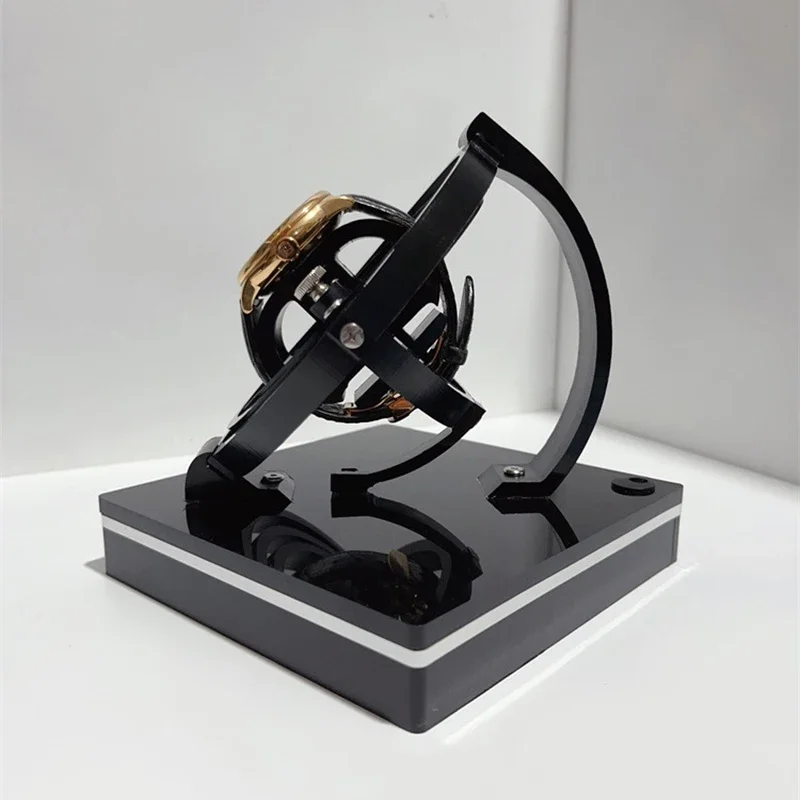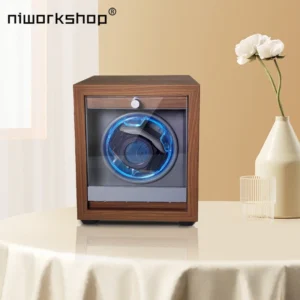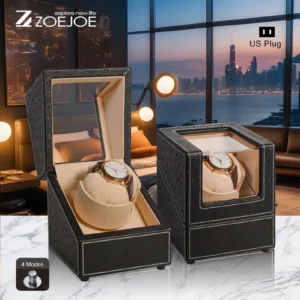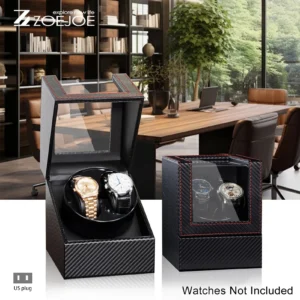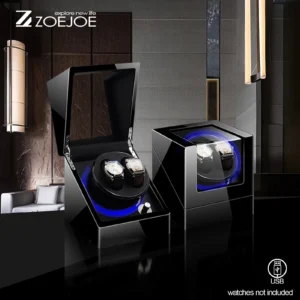Introduction to High-Performance Winder Motors
High-performance winder motors represent the pinnacle of precision engineering in the world of winding technology. These specialized motors go far beyond basic rotation capabilities, offering exceptional control, consistency, and reliability for applications where precision matters most. As industries demand increasingly precise material handling, these motors have evolved from simple rotational devices to sophisticated systems that can maintain perfect tension while adapting to changing conditions.
What separates high-performance winder motors from standard motors is their ability to deliver:
- Precise speed control with variations often less than 0.01% of set speed
- Dynamic torque response that adjusts instantly to changing loads
- Consistent tension maintenance throughout the entire winding process
- Seamless acceleration and deceleration to prevent material damage
- Advanced feedback systems that continuously monitor performance
The impact of these specialized motors is substantial, with manufacturers reporting productivity improvements of 15-30% after upgrading to high-performance systems. The precision gap is equally impressive—while standard motors might maintain tension within ±5%, high-performance options consistently achieve ±0.5% or better.
Understanding watch winder motor specs provides a solid foundation for appreciating how these specialized motors deliver such exceptional results. As we explore the technical details of these remarkable machines, you’ll discover why they’ve become essential components in industries where precision winding makes the difference between acceptable and exceptional results.
Core Technical Specifications of High-Performance Winder Motors
When evaluating winder motors for high-performance applications, several key specifications determine their suitability for particular uses. These technical parameters directly influence winding quality, precision, and overall operational efficiency.
Power and Torque Capabilities
High-performance winder motors typically range from 0.25 kW to 15 kW (0.33 HP to 20 HP), depending on the application scale. What’s crucial is not just the continuous torque rating but also the peak torque capacity, which often needs to be 200-300% of continuous rating to handle acceleration phases. Motors delivering high torque at low speeds without requiring gearboxes represent the premium tier in winding applications.
Speed Characteristics
Speed ranges typically span from near-zero to 3,000 RPM, with precision control throughout the entire range. The best high-performance motors maintain speed consistency within ±0.01% even under varying load conditions. Acceleration rates can reach up to 10,000 RPM/second in advanced servo systems designed specifically for winding applications.
Electrical Requirements
Most industrial winder motors operate on three-phase power (typically 380-480V), though specialized applications may use lower voltage DC systems or single-phase options. Current requirements vary significantly based on motor size and type, with efficiency ratings typically exceeding 90% for premium motors.
Dynamic Response Parameters
Response time—how quickly the motor reacts to command changes—is typically measured in milliseconds, with high-performance systems responding in less than 10ms. This rapid response enables immediate adaptation to tension changes as roll diameters change during winding.
Understanding the various types of motors in watch winders provides valuable insights into how these specifications translate into performance in specific applications. The right combination of these specifications ensures optimal winding quality while maintaining operational efficiency.
| Specification | Standard Motors | High-Performance Motors |
|---|---|---|
| Speed Control Accuracy | ±1-5% | ±0.01-0.1% |
| Torque Consistency | ±8-10% | ±1-3% |
| Response Time | 50-100ms | 5-10ms |
| Efficiency | 80-85% | 90-95%+ |
| Speed Range Ratio | 10:1 | 2000:1+ |
These specifications don’t exist in isolation—they work together as an integrated system that determines how effectively the motor will perform in demanding winding applications.
Types of High-Performance Motors for Winding Applications
The specialized demands of winding applications have led to the development of several motor types, each offering distinct advantages for specific winding scenarios. Understanding these different technologies is essential for selecting the optimal solution.
Servo Motors
Servo motors represent the gold standard for precision winding applications due to their exceptional control capabilities. These motors feature:
- Permanent magnet rotor designs that deliver high torque-to-inertia ratios
- Integrated high-resolution feedback devices (typically 10,000+ pulses per revolution)
- Exceptional dynamic response with acceleration rates up to 10,000 RPM/second
- Advanced control algorithms that compensate for mechanical resonances
Servo motors excel in applications requiring rapid speed changes and precise positioning, making them ideal for applications like textile winding where material properties demand gentle handling with precise tension.
Direct Drive Motors
Direct drive motors eliminate gearboxes and transmission components by connecting the motor directly to the load, offering:
- Zero backlash operation for immediate torque response
- Elimination of mechanical losses, improving efficiency by 5-15%
- Higher system stiffness resulting in improved dynamic performance
- Reduced maintenance requirements due to fewer mechanical components
Film and foil winding operations particularly benefit from direct drive solutions, as the absence of mechanical play ensures consistent tension even during rapid directional changes.
Permanent Magnet Synchronous Motors (PMSM)
PMSM technology provides an excellent balance of efficiency and performance with:
- Superior efficiency (up to 96%) compared to induction motors
- Compact design with 30-40% higher power density than equivalent induction motors
- Flat torque curve that maintains consistent tension across speed ranges
- Excellent thermal performance for continuous operation
The advanced motor technology in high-end watch winders incorporates many of the same principles used in industrial PMSM designs, though at a smaller scale and with different control parameters.
Torque Motors
Specialized for low-speed, high-torque applications, torque motors feature:
- Ring-shaped designs with large diameters for direct mounting to winding drums
- Extremely high torque at low speeds without gearing
- Water cooling options for sustained high-torque operation
- Special winding patterns that minimize torque ripple to less than 1%
Each motor type has its optimal use cases, with selection depending on factors including required precision, speed ranges, physical space constraints, and budget considerations.
Precision Control Systems for Winder Motors
Even the most advanced motor cannot perform optimally without sophisticated control systems. These control systems transform raw motor capabilities into precision winding performance through several key technologies.
Advanced Drive Technologies
Modern winder motor drives employ digital processing power that would have been unimaginable a decade ago:
- 32-bit processors running control loops at 16kHz or higher
- Vector control algorithms that independently manage magnetic flux and torque
- Field-Oriented Control (FOC) that optimizes motor efficiency throughout speed range
- Auto-tuning capabilities that adapt to specific motor characteristics
These drives precisely calculate current patterns 16,000+ times per second, enabling dynamic torque control that responds instantly to changing winding conditions.
Feedback Systems
Closed-loop operation relies on high-resolution feedback devices that monitor actual performance:
- Optical encoders providing 10,000 to 24,000 pulses per revolution
- Resolver technology for harsh environments with electrical noise or vibration
- Load cells and ultrasonic sensors for direct material tension measurement
- Specialized dancers and accumulators that provide mechanical tension averaging
Proper settings for watch winder settings for different movements follow similar principles of matching control parameters to specific mechanical requirements, though at a more refined scale.
Specialized Control Algorithms
Winding-specific algorithms address the unique challenges of maintaining consistent tension:
- Taper tension control that adjusts force as roll diameter increases
- Inertia compensation that anticipates acceleration forces
- Anti-resonance filters that prevent oscillation in mechanical systems
- Center winding vs. surface winding calculations for different material types
These control systems typically offer 10-20 times better performance than general-purpose motor drives, with tension variations often kept below ±1% compared to ±10-20% with basic systems.
Critical Performance Characteristics for Winding Applications
Beyond basic specifications, several critical performance characteristics determine how effectively a motor system will perform in demanding winding applications.
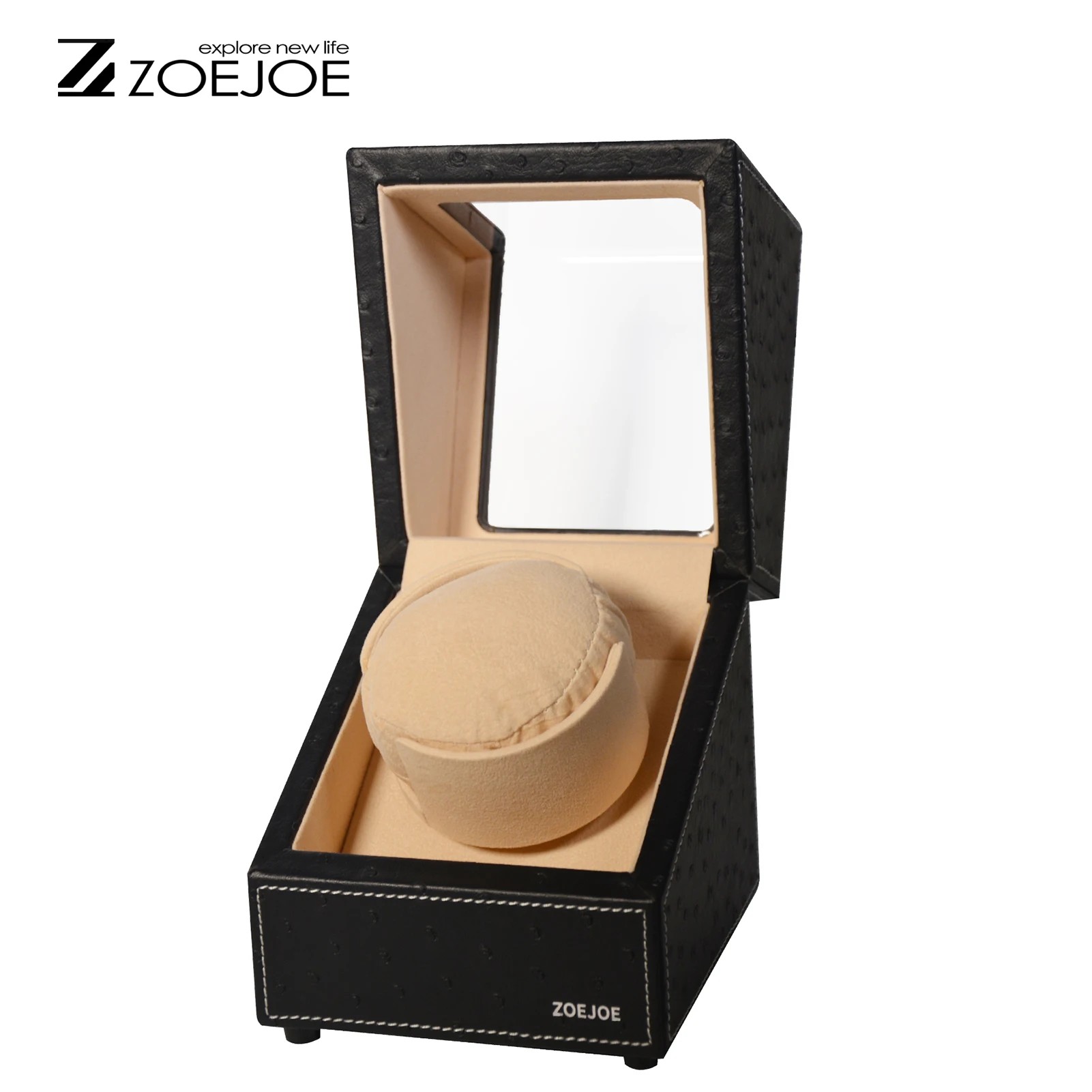
Dynamic Response
The ability to change speeds rapidly without disturbing material tension represents one of the most challenging aspects of winder motor performance:
- Acceleration rates ranging from 1,000 to 10,000 RPM/second depending on application
- Controlled acceleration curves that prevent jerk-induced tension spikes
- Load-to-motor inertia ratios ideally maintained below 10:1 for optimal control
- Advanced algorithms that predict and compensate for mechanical system behavior
In high-quality systems, speed changes can occur without tension variations exceeding ±3%, even during emergency stops.
Tension Control Precision
Maintaining consistent tension regardless of roll diameter changes is fundamental to quality winding:
- Direct tension measurement through load cells or dancer positions
- Center-winding calculations that compensate for changing moment arms
- Surface-winding algorithms that maintain constant surface speed
- Specialized handling of material-specific properties like elasticity
Understanding how fast a watch winder should spin applies similar principles of matching rotational parameters to specific requirements.
Speed Regulation
Speed consistency directly impacts material layering and tension:
- Speed regulation of ±0.01% or better at steady state
- Minimal variation even during power supply fluctuations
- Ability to synchronize multiple motors within microseconds
- Smooth performance across entire speed range from 0.1% to 100% of maximum
Torque Ripple Management
Even minor fluctuations in torque can cause visible defects in sensitive materials:
- Advanced motor designs with skewed stator slots to minimize cogging
- Digital current control to eliminate electrical ripple sources
- Mechanical isolation to prevent external vibration transfer
- Filter algorithms that identify and cancel harmonic frequencies
The best systems maintain torque ripple below 1%, preventing tension variations that would otherwise create visible bands or layers in wound materials.
Advanced Features for Industrial Environment Optimization
Industrial winding environments present numerous challenges beyond basic motor control. High-performance winder motors incorporate specialized features to maintain reliability and precision despite these challenges.
Thermal Management Systems
Heat generation represents a major limitation for continuous operation:
- Liquid cooling channels integrated into motor housings for 2-3 times greater continuous torque
- Temperature sensors embedded at critical points within motor windings
- Adaptive algorithms that manage performance to prevent overheating
- Specialized insulation systems rated for 180°C (Class H) or higher
Effective thermal management enables motors to maintain full torque capability even after hours of operation at low speeds, where natural air cooling is minimal.
Robust Design Elements
Industrial environments demand exceptional durability:
- IP65 or higher protection ratings for dust and moisture resistance
- Specialized bearing designs with L10 life ratings exceeding 100,000 hours
- Vibration resistance tested to withstand 10G acceleration forces
- Corrosion-resistant materials for chemical processing environments
These robust design elements ensure consistent performance even in harsh conditions while reducing maintenance requirements and downtime.
Compact and Integrated Designs
Space efficiency has become increasingly important in modern winding machinery:
- Integrated drive electronics that eliminate separate control cabinets
- Hollow-shaft designs that allow direct mounting without couplings
- Pre-engineered packages combining motor, drive, and feedback
- Modular components that simplify maintenance and upgrades
Many quiet watch winders utilize similar space-efficient design principles, incorporating the motor and control systems within compact housings while maintaining silent operation.
Industry-Specific Applications and Requirements
Different industries place unique demands on winder motor systems, requiring specialized configurations to achieve optimal results.
Textile Industry Applications
Textile winding requires exceptional tension sensitivity:
- Ultra-precise tension control within ±0.5% to prevent yarn stretching
- Speed ranges from near-zero to 2,500+ RPM for various materials
- Quick-stop capabilities that prevent overflow during breaks
- Material-specific tension profiles stored as digital recipes
Proper textile winding can increase fabric quality while reducing waste by up to 30% compared to systems with basic motor control.
Paper and Converting Industry
Paper processes demand robust torque with precise control:
- High torque at low speeds for large-diameter rolls
- Specialized dancer systems for shock absorption
- Web break detection response times under 20 milliseconds
- Center-driven unwind stands with controlled braking
Advanced paper converting lines using high-performance motors can achieve throughput increases of 15-25% while reducing material waste.
Film and Foil Processing
Ultra-thin materials require exceptional finesse:
- Extremely smooth acceleration to prevent stretching
- Tension ranges often as low as 5-10% of those used for paper
- Temperature compensation algorithms that adjust for material expansion
- Static elimination systems integrated with motor control
The principles behind these precision systems share similarities with those found in our watch winders collection, where precise control prevents damage to delicate mechanisms.
Wire and Cable Manufacturing
Wire winding combines high torque with precise layering requirements:
- Traversing systems synchronized within microseconds to motor position
- Tension profiles that adjust based on wire elasticity
- Layer counting with automatic tension adjustment
- Specialized braking systems for heavy-duty applications
Energy Efficiency and Sustainability Considerations
Modern high-performance winder motors offer significant sustainability advantages beyond their precision benefits, making them increasingly important in energy-conscious manufacturing environments.
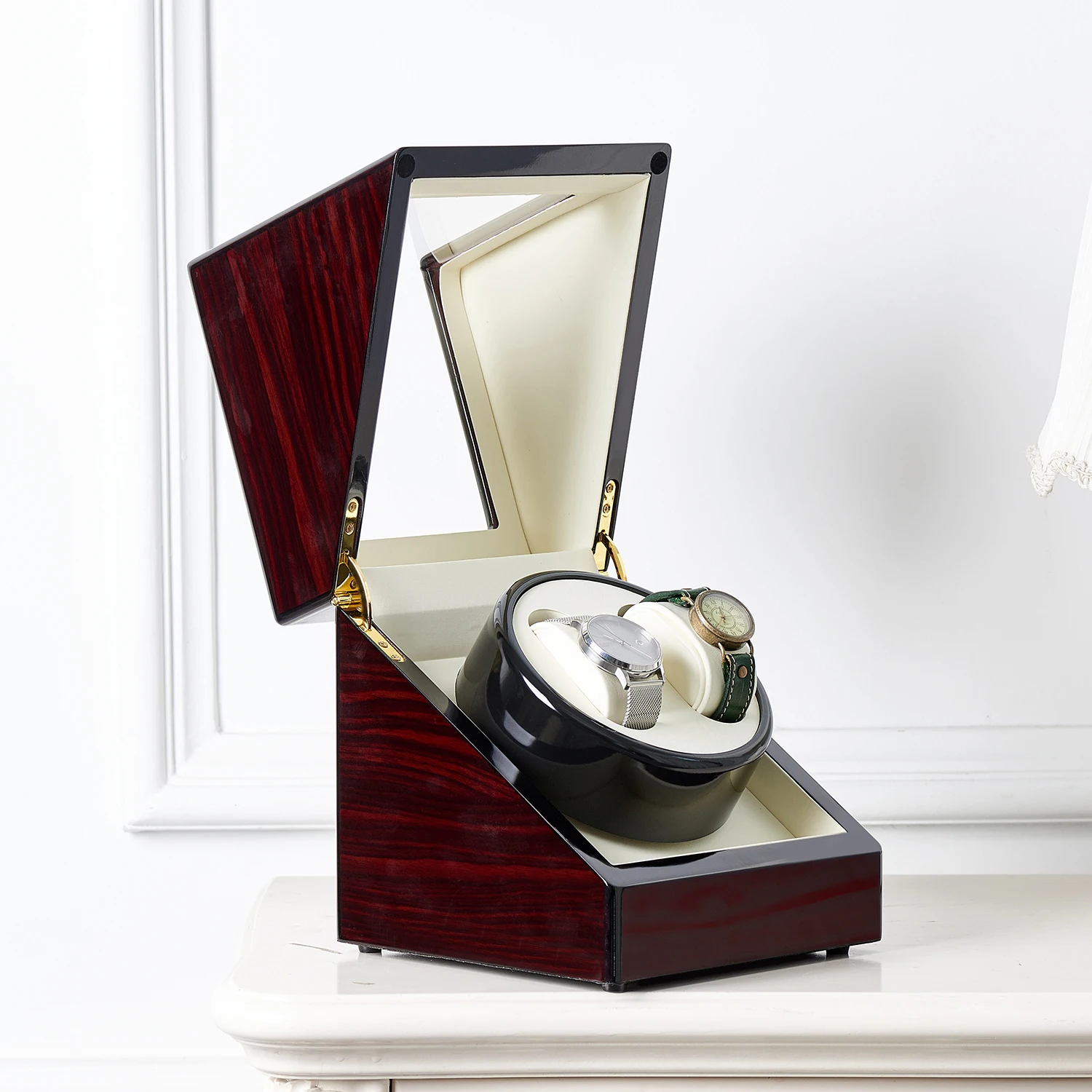
Energy Consumption Comparisons
The efficiency differences between motor technologies are substantial:
- Premium permanent magnet motors achieve 90-96% efficiency compared to 82-87% for standard induction motors
- Variable frequency drives reduce energy consumption by 30-50% compared to fixed-speed operation
- Direct drive systems eliminate transmission losses of 5-15% found in geared systems
- Smart standby modes reduce energy consumption during idle periods by up to 90%
Understanding how much electricity watch winders use follows similar principles of evaluating efficiency, though at a much smaller scale.
Regenerative Drive Systems
Advanced winder systems can recover energy during deceleration:
- Regenerative drives feed braking energy back to the power grid rather than wasting it as heat
- Energy recovery ranging from 15-40% of total consumption depending on application
- Reduced cooling requirements due to lower heat generation
- Typical payback periods of 1-3 years for regenerative systems
Material Waste Reduction
Precision control directly translates to sustainability improvements:
- Reduced edge trim requirements due to more consistent winding
- Fewer breaks and product defects reducing scrap rates by 10-30%
- Extended machine life due to lower mechanical stress
- Decreased chemical and treatment usage due to higher first-pass quality
Automatic Watch Winder, Luxury Watch Winder, Single Watch Box
$307.39 Select options This product has multiple variants. The options may be chosen on the product page4 Watch Winder, 6 Watch Box, Automatic Watch Winder
$512.31 Select options This product has multiple variants. The options may be chosen on the product pageAutomatic Watch Winder, Single Watch Winder, Wooden Watch Holder
$201.76 Select options This product has multiple variants. The options may be chosen on the product pageAutomatic Watch Winder, Leather Watch Travel Case, Single Watch Winder
$146.30 Select options This product has multiple variants. The options may be chosen on the product pageAutomatic Watch Winder, Double Watch Winder, Leather Watch Boxes
$147.60 Select options This product has multiple variants. The options may be chosen on the product pageAutomatic Watch Winder, Double Watch Winder
$206.18 Select options This product has multiple variants. The options may be chosen on the product page
These efficiency gains not only reduce operating costs but also significantly decrease the environmental footprint of winding operations, making high-performance motors an environmentally responsible choice.
How to Select the Optimal Winder Motor for Specific Applications
Selecting the right motor system requires a systematic approach that balances technical requirements with practical considerations.
Systematic Approach to Motor Selection
Begin with a thorough assessment of application requirements:
- Calculate maximum torque needs based on material width, tension, and roll diameter
- Determine speed ranges from minimum to maximum operational speeds
- Identify acceleration requirements based on desired throughput
- Assess environmental factors including temperature, dust, and vibration
- Consider space limitations and mounting options
These calculations provide the foundation for motor sizing and selection.
Matching Motor Characteristics to Application
Once requirements are established, match them to appropriate motor technology:
- For high dynamic applications: Servo motors with low rotor inertia
- For direct-coupled large rolls: Torque motors with hollow shafts
- For general-purpose applications: PMSMs with appropriate gear ratios
- For harsh environments: Specialized motors with enhanced protection ratings
Exploring automatic watch winders with different motor specifications can provide insights into how these selection principles work in practice, albeit at a different scale.
Avoiding Common Selection Pitfalls
Several common mistakes can lead to suboptimal performance:
- Undersizing motors based only on steady-state requirements without considering peak needs
- Selecting excessive servo performance for applications that don’t require it
- Mismatching drive and motor capabilities
- Neglecting feedback system resolution requirements
Proper sizing typically includes a 20-30% margin above calculated requirements to ensure reliable operation throughout the system’s life.
Emerging Trends and Future Developments
The field of high-performance winder motors continues to evolve rapidly, with several emerging technologies promising to further enhance capabilities.
Integration of Advanced Sensors and IoT
Smart manufacturing concepts are transforming winder motor systems:
- Embedded sensors monitoring not just position but bearing health, winding temperature, and vibration patterns
- Cloud connectivity enabling remote monitoring and diagnostics
- Real-time quality control through integrated vision systems
- Predictive maintenance algorithms that forecast potential failures weeks in advance
These advances are reducing downtime by 30-50% in early adopter facilities.
Smart Motor Technologies
Self-optimizing systems represent the cutting edge:
- Adaptive control algorithms that learn material behavior over time
- Auto-tuning capabilities that adjust parameters without human intervention
- Virtual sensing techniques that derive measurements without physical sensors
- Machine learning integration for quality prediction and optimization
Our collection of luxury watch winders incorporates some of these advanced technologies in miniaturized form, providing premium performance for fine timepieces.
Energy Optimization Innovations
Next-generation efficiency improvements include:
- Advanced magnetic materials reducing losses by up to 20%
- Silicon carbide power electronics enabling higher switching frequencies and efficiency
- Integrated motor and drive packages that eliminate connection losses
- Biomimetic cooling designs inspired by natural systems
These innovations are pushing efficiency boundaries while enhancing performance capabilities.
Comparing Performance and Cost Considerations
The economic case for high-performance winder motors must balance initial investment against long-term benefits.
Initial Investment vs. Long-term Operational Costs
Premium motor systems typically cost 2-3 times more than standard options, but offer compelling advantages:
- Energy savings of 15-40% depending on application and duty cycle
- Maintenance cost reductions of 30-50% due to fewer mechanical components
- Extended service life of 15-20 years compared to 7-10 years for standard systems
- Significant reduction in costly downtime events
Analysis shows typical return on investment periods of 1.5-3 years for high-performance systems.
Performance Benefits with Production Impact
Productivity improvements often provide the most significant financial benefits:
- Throughput increases of 10-30% due to faster acceleration and fewer stoppages
- Material waste reduction of 5-15% through more consistent tension control
- Quality improvements reducing customer returns and warranty claims
- Increased production flexibility enabling smaller batch sizes
Understanding watch winder warranty and reliability factors applies similar principles of evaluating long-term value rather than focusing solely on initial cost.
Installation and Integration Best Practices
Proper installation is critical to realizing the full potential of high-performance winder motors.
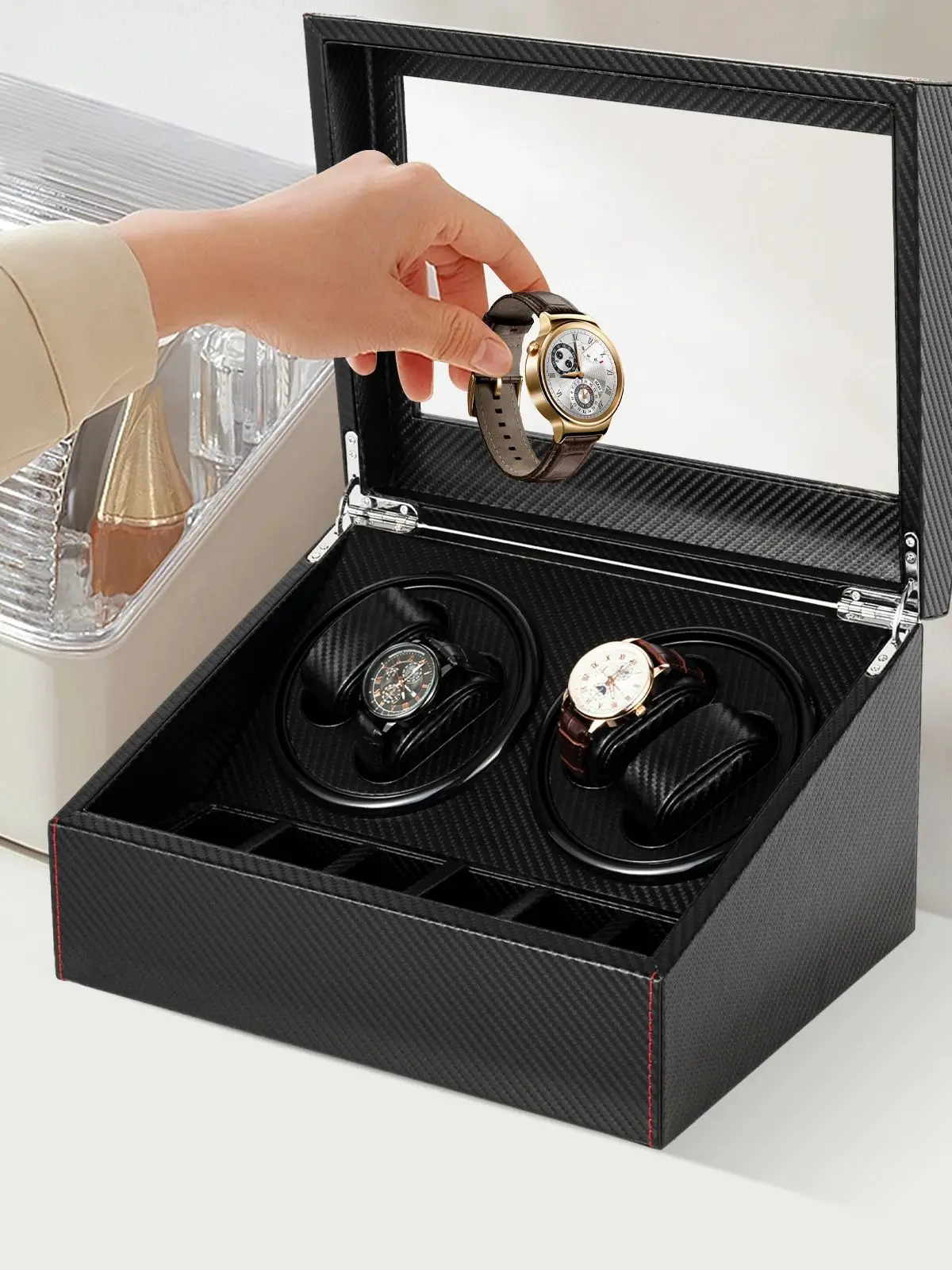
Critical Installation Considerations
Several factors ensure optimal motor performance:
- Rigid mounting structures with natural frequencies at least 3 times higher than maximum motor speed
- Precise alignment with maximum runout tolerances under 0.002 inches
- Proper grounding and shielding to prevent electrical noise interference
- Adequate ventilation providing minimum specified airflow around motor and drive
These foundational elements prevent common problems that can undermine performance.
System Integration Guidelines
Integration with existing systems requires careful planning:
- Communication protocol selection matched to facility standards (EtherCAT, PROFINET, etc.)
- Clear division of control responsibilities between main PLC and drive system
- Standardized fault handling procedures across connected systems
- Thoughtful HMI design that provides necessary information without overwhelming operators
Many double watch winders feature similar integration challenges on a smaller scale, requiring synchronized control of multiple motors within a single housing.
Commissioning Procedures
Proper startup procedures establish the foundation for long-term performance:
- Systematic tuning sequence starting with basic motion and progressing to dynamic operation
- Load testing across full operational range rather than single-point verification
- Documentation of baseline vibration and thermal signatures for future comparison
- Operator training that covers both normal operation and troubleshooting procedures
Following these practices typically reduces commissioning time by 40-50% while ensuring optimal performance from the start.
Can High-Performance Winder Motors Reduce Material Waste?
Yes, high-performance winder motors significantly reduce material waste through several mechanisms:
- Precise tension control prevents stretching and deformation that leads to quality issues
- Consistent speed regulation ensures uniform material distribution without thick or thin spots
- Accurate edge positioning reduces the need for excessive trim margins
- Smooth acceleration and deceleration prevent breaks that result in scrap
Manufacturers typically report waste reduction of 5-15% after upgrading to high-performance winding systems. In industries with expensive materials, this waste reduction often provides the fastest return on investment.
For applications like single watch winders, these same principles ensure precise movement that protects valuable timepieces from irregular motion that could potentially damage delicate mechanisms.
How Do Environmental Conditions Affect Winder Motor Selection?
Environmental factors significantly impact motor selection and performance in winding applications:
- Temperature extremes reduce motor capacity by 10-30% if not properly accounted for
- High humidity environments require enhanced insulation systems and appropriate IP ratings
- Dusty conditions necessitate sealed bearings and filtered cooling systems
- Vibration-prone installations need specialized mounting systems and possibly active dampening
Proper understanding of watch winder motor power considerations includes evaluating the environmental conditions where the winder will operate, as these factors influence performance and longevity.
Motors must be specified with appropriate derating factors for environmental challenges. For example, a motor that delivers 10 Nm of continuous torque at 25°C might only provide 7 Nm when operating at 40°C unless specifically designed with enhanced cooling.
Protection ratings should match environmental challenges, with IP54 sufficient for most indoor applications, while IP65 or higher is necessary for environments with water spray or fine dust particles.

